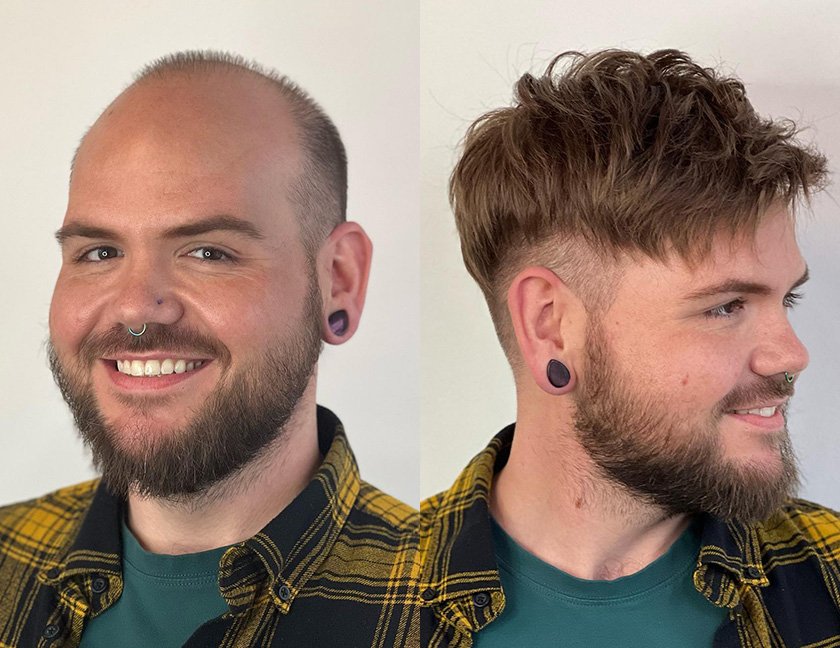Reality Check: Exploring and Disproving 5 Toupee Misconceptions
Introduction
In a society where appearances frequently influence opinions, false beliefs can spread quickly, particularly in regard to hair loss remedies like toupees. Toupees serve a useful role, yet they are frequently the target of unjust criticism and false information. By dispelling these myths, this piece seeks to give readers a much-needed reality check on toupees. We intend to dispel these fallacies in order to promote a more truthful perception of toupees and combat the stigma attached to them.
Understanding Toupee Misconceptions

Before dispelling the top five myths about toupees, it’s important to comprehend how people’s perceptions may be influenced by these lies. Ignorance or insufficient experience can give rise to misconceptions that distort perspectives and result in unjust conclusions. Misconceptions regarding toupees possess the ability to sustain discrimination and dissuade individuals from considering them as a successful remedy for hair loss. We may be able to have a more educated and accepting conversation about toupees if we can identify and refute these myths.
Debunking Top 5 Toupee Misconceptions
1. “Obvious and Unnatural Appearance”
The idea that toupees are blatantly phony is arguably one of the most widespread fallacies. However, this notion is no longer accurate due to developments in toupee technology. Contemporary toupees are painstakingly designed to seem almost inconspicuous when combined with natural hair. When paired with the appropriate fit and fashion, a toupee can enhance one’s appearance without drawing unwanted attention.
2. “Uncomfortable to Wear”
Another widespread misunderstanding is that getting a toupee hurts and is uncomfortable. Although improperly made or ill-fitting toupees can cause pain, quality toupees are made with the comfort of the wearer in mind. Because of the light materials and airy architecture, people wearing toupees won’t feel constrained or cumbersome while going about their regular activities. In addition, contemporary toupees are made to fit comfortably and snugly to reduce the possibility of slipping or hurting.
3.” Limited Styles and Varieties”
Contrary to popular assumption, toupees come in a wide range of styles and variations to meet the preferences and requirements of certain customers. Since toupees come in a variety of lengths, textures, and colors, consumers may easily achieve the look they want, whether it’s minor additions or striking modifications. Choosing to go for a dramatic style or going for a natural-looking hairline, there’s a toupee option for everyone.
4. “High Maintenance”
An additional prevalent misperception regarding toupees is the idea that they need a lot of upkeep. Although toupees do need routine maintenance, it’s more easier than most people think. Including simple chores like washing, styling, and conditioning in one’s grooming regimen is simple. Furthermore, the need for frequent replacements has decreased because of improvements in toupee materials, which have made them more resilient and long-lasting.
5. “Social Stigma”
The idea that having a toupee is socially unacceptable is maybe the most harmful one of them all. In actuality, perceptions about hair loss remedies like toupees are changing, as more people accept them as a way to improve their looks and self-esteem. We can build a more accepting society where people feel empowered by dispelling myths and encouraging acceptance to make choices that align with their personal preferences and needs.

Conclusion
In conclusion, when it comes to toupees, it’s critical to distinguish fact from myth. By dispelling widespread myths and offering precise information, we can enable people to choose hair loss treatments with knowledge. For those who are experiencing hair loss, toupees offer a diverse and practical solution, whether they are searching for a striking style shift or a natural-appearing boost. We can build a more accepting and compassionate society by embracing variety and combating stigma.
